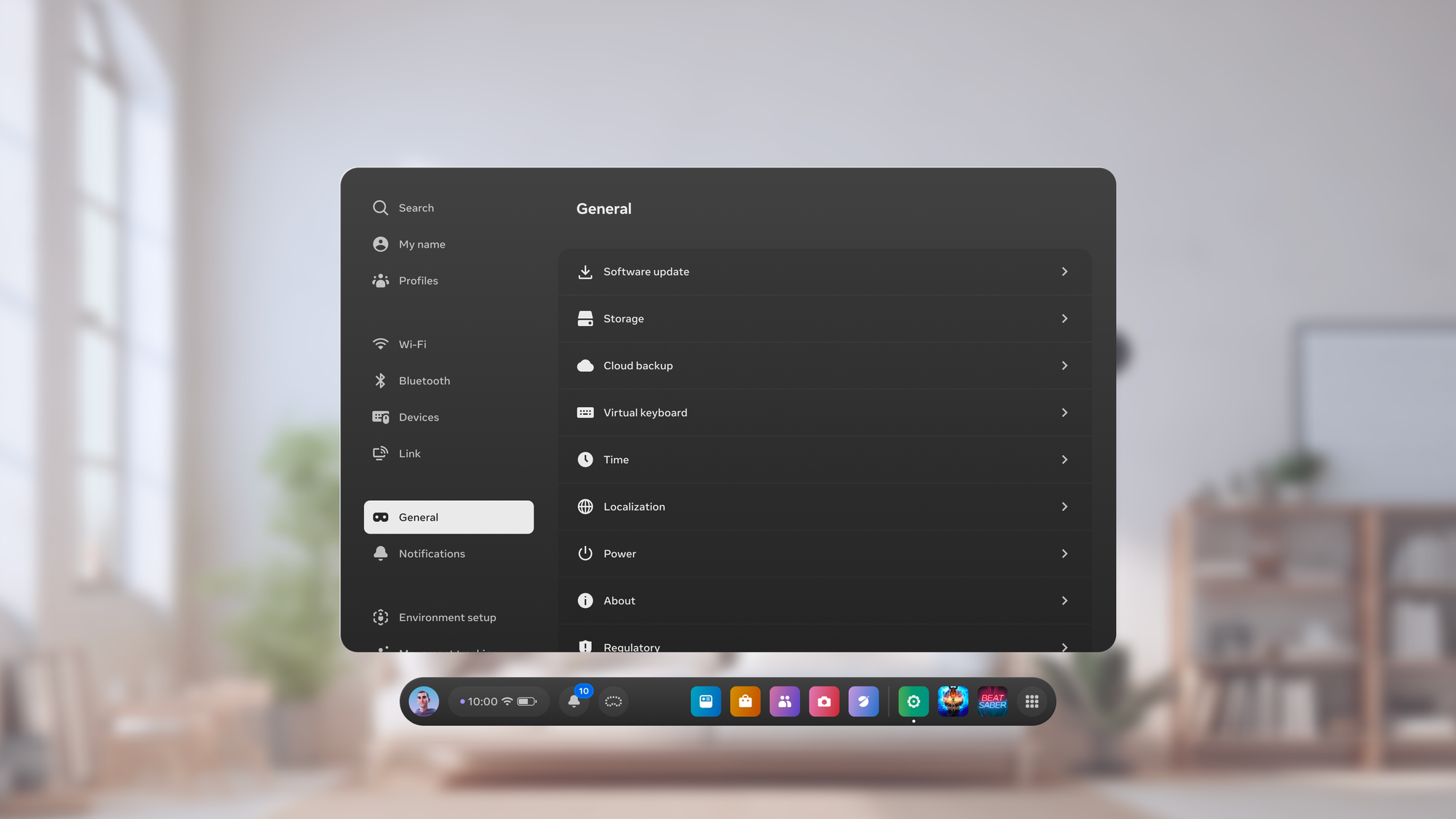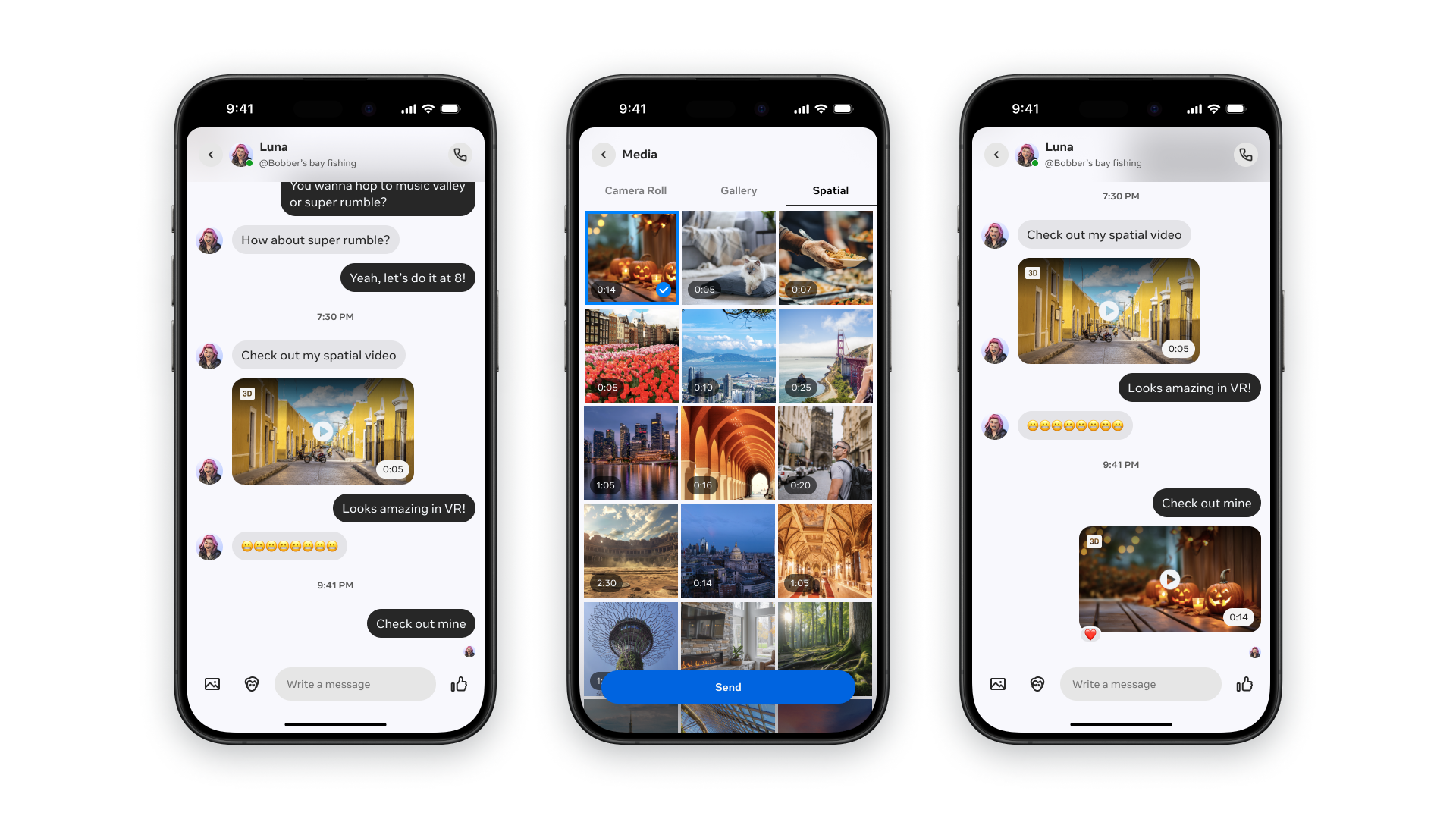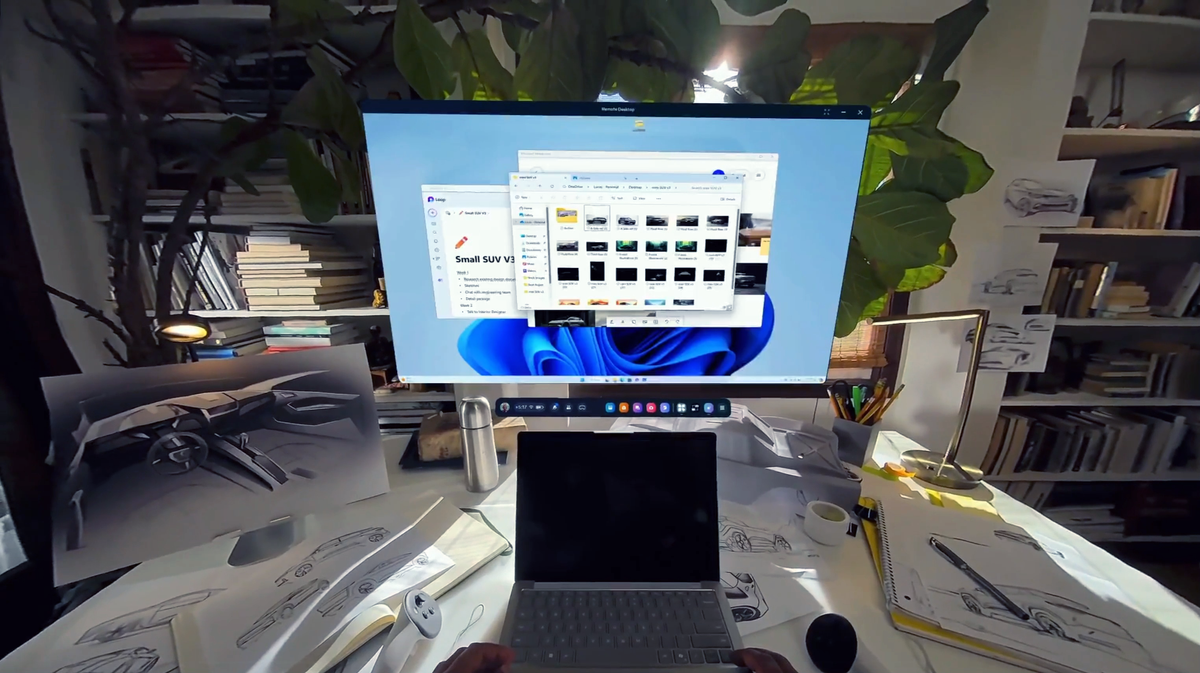It That’s a lot!
As with all Quest updates, v71 will “roll out” gradually, so it may take a few days or even weeks for your headset to get the v71 update.
Design Refresh & New Settings
Quest v71 brings a design refresh to Horizon OS.
Meta said it “made assorted changes to the way panels look and behave, where the control bar resides, the colors of various UI elements, and so on”. Meta Meta says it’s also improved search within Settings, so you can “find exactly what you were looking for”.
AI Audio To Expression
Meta says v71 brings Audio to Expression, an on-device AI model that “derives compelling facial motion and lip sync signals” from only microphone input, providing estimated facial expressions without face tracking hardware.

Audio to Expression will be provided as part of the same API that developers can already use to access Quest Pro face tracking.
There has been an Oculus Lipsync SDK for developers since 2015, a model which converts microphone audio into plausible lip movement (we even use it in our weekly from-VR podcasts). Audio And remarkably, Meta claims Audio to Expression actually uses less CPU than Oculus Lipsync.
Smoother Passthrough
Meta says it “improved the camera frame rates to align with your display frame rates”, which should make passthrough look smoother.
This is the third announced improvement Meta has made to its passthrough technology since the launch of Quest 3. Update
in April brought improved exposure control and dynamic range, making it easier to read physical displays like your phone or monitor, and then update
brought significantly reduced warping distortion.
Travel Mode On Trainsv64As Meta teased at Connect, v71 adds support for trains to Travel Mode.v66Originally designed for airplanes, Quest 2 and 3 got a Travel Mode back in May, and it’s supported on the new Quest 3S too.
But Why Is A Travel Mode Needed In The First Place?
People often think that markerless inside-out tracking systems on headsets, glasses, and self-tracking controllers only use the cameras, but this isn’t the case. These systems rely just as much on the inertial measurement unit (IMU), a chip that contains a tiny accelerometer and gyroscope.
While cameras typically run at 30Hz or 60Hz, the IMU typically provides updates around 1000Hz, enabling much lower latency. I You And if you again take the integral of those velocity values over time, you get displacement from the original position.
This process is called dead reckoning. The But in a moving vehicle the accelerometer will pick up the acceleration of the vehicle itself, thinking it’s the headset itself moving, which results in sudden and rapid positional drifting.
Some Quest owners reported that Travel Mode already works with trains, but this official support will likely make it more reliable.
Apple Vision Pro has had a Travel Mode since launch, which we praised
, and Apple also just added official support for trains in
.
Dolby Atmos & Dolby Digital Surroundin our reviewQuest v71 adds support for both Dolby Atmos and Dolby Digital 5.1/7.1 surround audio, with the headset’s rotation panning the soundscape.visionOS 2Meta says this will be supported in “content on select websites in Browser” and that it will “expand to other service providers soon”.
A Calendar App
With v71 Horizon OS now has a built-in Calendar app.
The Horizon OS Calendar supports Google Calendar and Microsoft’s Outlook Calendar, as well as Horizon Worlds events and
meetings.
Remote Desktop in Quick Settings
With v71, you can access your PC as a virtual screen in Horizon OS using Meta’s first-party software via a shortcut in Quick Settings, meaning you no longer need to hunt through your app library for it.Horizon WorkroomsIn the future Meta plans to reduce the friction of Remote Desktop even further for Windows 11 laptops, via a
that will let you extend them by just looking at them.
Scene Mesh Scanning Improvements
Quests Can Soon Extend Windows Laptops By Just Looking At Them
Quest headsets will soon be able to extend Windows 11 laptops by just looking at them, and without installing specific software.
With v71, Meta says you’ll be able to update the mesh for a room from Settings, building on and refining the original mesh, instead of needing to rescan it from scratch.partnership with MicrosoftYou’ll also, the company says, see a miniature 3D representation of each room you have saved.
Volume Mixer
With v71 you can adjust the volume of Calls separately from the volume of App & Media audio, from Quick Settings.
This means you’ll no longer need to bring down the audio volume of each game to hear other people in your Horizon Party, WhatsApp/Messenger call, or other communications platform.
Share (Spatial) Videos In Horizon Chats
With v71, you’ll be able to send videos to your Horizon followers in Horizon chats.
Meta says this supports both flat videos and Apple spatial videos, meaning you can directly send spatial videos you capture with your iPhone 15 Pro or iPhone 16 series phone, and others will be able to see them in their headset.
In-Headset Controller & Stylus Pairing
Previously, you could only pair new Touch controllers, if you got a replacement for example, using the Meta Quest mobile app (now called

).
With v71 Meta says you can pair Touch controllers and Logitech MX Ink styluses inside the headset, just like you already can with gamepads.
However, we should note that the company actually originally said this would arrive in Meta Horizon, and it didn’t, continuing the confusing trend of Meta putting things in the official Horizon OS hangelog that aren’t actually there in the build.
With v71, Meta says it added “real-time permissions indicator” to the universal menu bar of Horizon OS, letting you know which features are currently being accessed by apps.
This functionality is also present on iPhone and Android phones, as well as other platforms, and is now considered a fundamental privacy feature.v68
